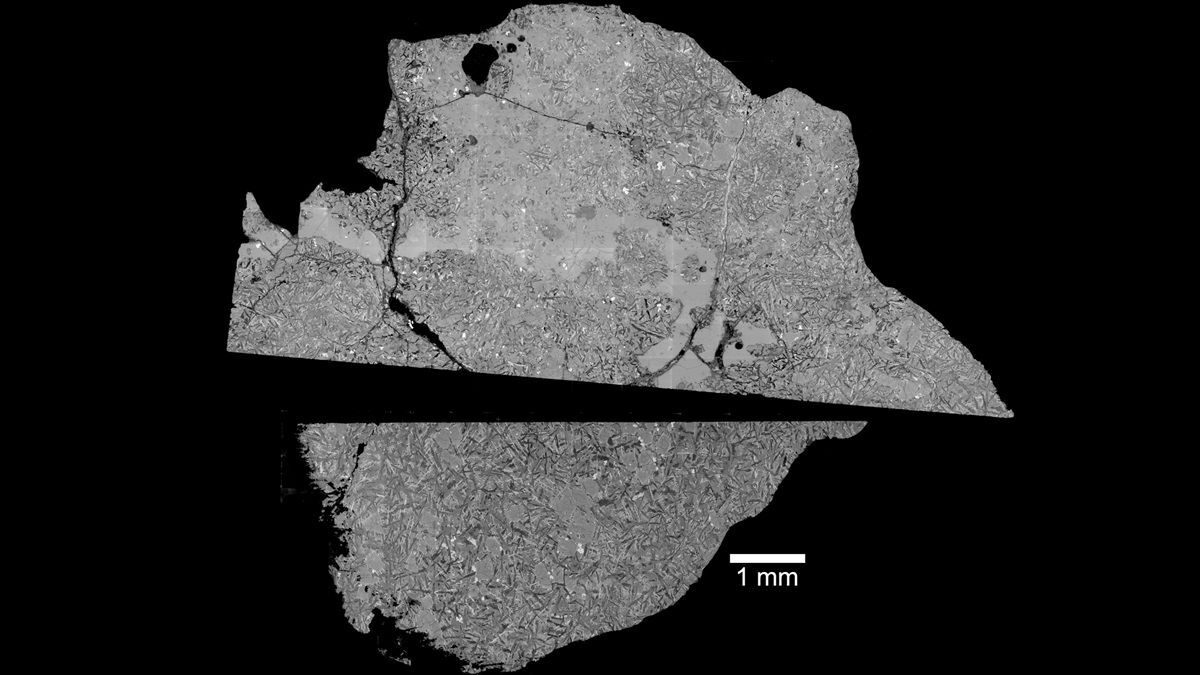12.07.2025

Images of the sample obtained using a scanning electron microscope. These are backscattered electron images, and the different shades of grey highlight different chemical compositions of the minerals making up the rock. Credit: University of Manchester.
A 2.35-billion-year-old meteorite found in northwest Africa has a unique chemical signature which could fill a significant gap in our understanding of the Moon’s volcanic history.
Northwest Africa (NWA) 16286 meteorite was discovered in 2023. New analysis of the rock was presented at the geochemistry-focused 2025 Goldschmidt Conference (6–11 July) in Prague, Czech Republic.
Lead isotope analysis suggests the fragment is about 2.35 billion years old, a time when the Earth-Moon system was already about 2 billion years old. This makes it the youngest of the 31 lunar meteorites composed of basalt found on Earth.
Few lunar samples have been found from this time.
The 311g rock’s chemistry suggests it formed from a lava flow that solidified after emerging from the Moon’s interior. Basalt on Earth is a sure sign of ancient volcanic activity, such as in the Australian state of Victoria where about 400 ancient volcanoes produced extensive basalt flows that covered much of its western part.
“The age of the sample is especially interesting because it fills an almost billion-year gap in lunar volcanic history,” says Joshua Snape, a research fellow at the UK’s University of Manchester, who presented the findings at the Goldschmidt Conference. “It’s younger than the basalts collected by the Apollo, Luna and Chang’e 6 missions, but older than rocks brought back by China’s Chang’e 5 mission.”
Snape says the rock’s age suggests volcanic activity continued on the Moon throughout this period of time. It is possible that lunar vulcanism was maintained by an ongoing heat generation process such as the decay of radioactive elements.
“Moon rocks are rare, so it’s always interesting when we get something that stands out and looks different to everything else,” Snape adds. “There is much more yet to learn about the Moon’s geological past, and with further analysis to pinpoint its origin on the surface, this rock will guide where to land future sample return missions.”
Finding lunar meteorites on Earth is a valuable method for investigating the Moon’s geological history. Such finds can come from anywhere on the Moon’s surface, not just the immediate vicinity of a space mission, and scientists can avoid the massive costs of launching rovers or crewed craft.
NWA 16286 was likely dislodged from the lunar surface by an asteroid. The impact gave the rock a distinct composition of melted glassy pockets and veins.
The researchers plan to publish their findings in a peer-reviewed journal later this year.
Quelle: COSMOS
